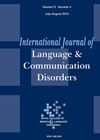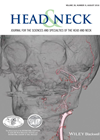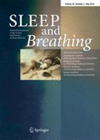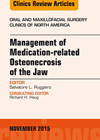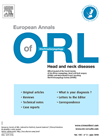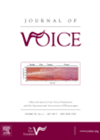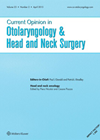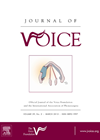
Journal Reviews
Supporting second language in bilingual children with cochlear implants
There have been mixed reports regarding the benefits of supporting two languages for bilingual children using cochlear implants. With an ever-increasing number of children with hearing loss undergoing cochlear implantation, this study provides timely clinical evidence. The authors studied the...
Contemporary UK experience of oropharyngeal transoral laser microsurgery
It is well recognised that the current emergence of HPV-positive oropharyngeal squamous cell carcinoma (OPSCC) as a distinct disease entity requires a fresh look at standard treatment modalities that are based on chemoradiotherapy for stage III/IVa OPSCC. The Newcastle experience...
Effectiveness of oral pressure therapy in obstructive sleep apnoea: a systematic analysis
Oral pressure therapy (OPT) is a relatively new form of therapy for obstructive sleep apnoea (OSA). Paradoxically it seems to work even though it creates a vacuum in the oral cavity as opposed to the gold standard of continuous positive...
Diagnosis of osteonecrosis of the jaw
Although the management of osteonecrosis of the jaw is usually provided by colleagues in maxillofacial surgery, it is essential for ENT surgeons to effectively diagnose the various presentations of this condition. Affected bone that is exposed and necrotic may remain...
Aerosols and polypi
Infection in the operative cavities after endoscopic sinus surgery for sinonasal polyposis leads to recurrence of symptoms and mucopurulent discharge. The usual therapies include systemic antibiotics sometimes with steroids. The authors hypothesised that the use of a topical antimicrobial (tobramycin...
The benefits of early voice therapy for unilateral vocal cord paralysis
This retrospective review of voice outcomes following a diagnosis of unilateral vocal fold paralysis divided patients into three groups according to the time of initiation of voice therapy following the onset of paralysis. The ‘early’ group started voice therapy within...
Management of the neck in maxillary sinus carcinomas
Primary malignant tumours of the sinonasal tract account for less than 10% of head and neck cancers, of which the maxilla is the second most common subsite and squamous cell carcinoma (SCC) is the most prevalent histological type. Maxillary SCCs...
Gardasil vaccination – an effective adjuvant therapy for RRP?
The clinical manifestations of recurrent respiratory papillomatosis (RRP) can vary hugely from individual to individual. Whilst some affected children will outgrow the disease, a subset of patients will experience frequent recurrences and require multiple surgical procedures over the course of...

